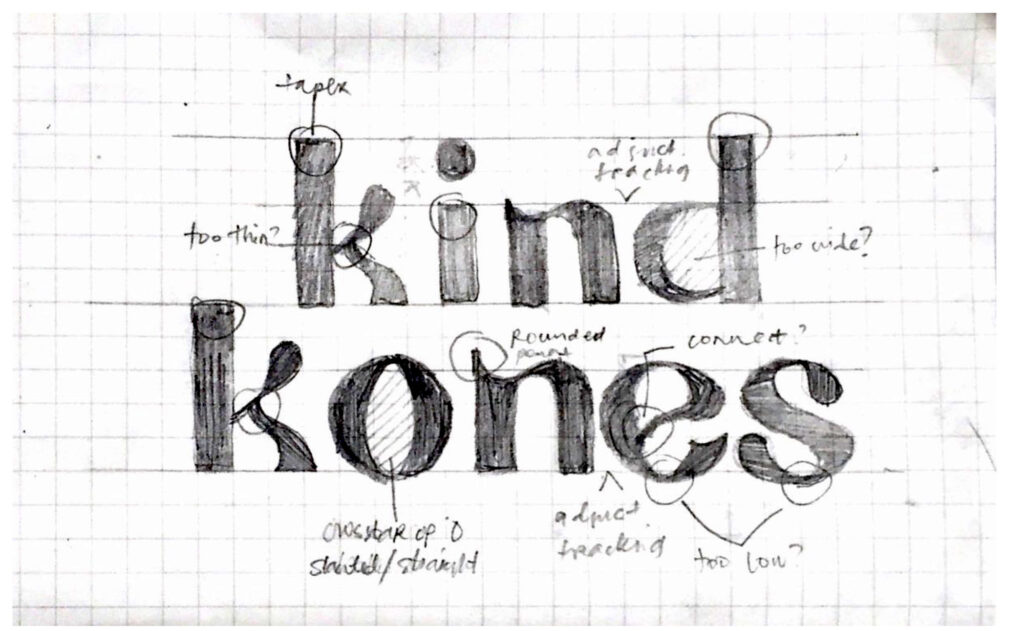Entrepreneurs should know that branding isn’t just about logos and typefaces—it speaks so much about your relationship with your customers
When done right, branding can tell your story and communicate your values as a restaurant or food brand effectively. Take the case of Manila-based design firm Design For Tomorrow which recently collaborated with Kind Kones, an all-natural vegan ice cream brand from Malaysia.
“The first thing we challenged them with was the foundation,” says Design For Tomorrow creative director and chief strategist Ric Gindap. “Let’s go back to the basics. What are you trying to do with this? Why is this really important since there are so many dessert brands out there? What makes you different? What’s the most authentic component of the brand that cannot be challenged by anyone else?”
Kind Kones co-founders Ish and Serina Bajaj are both lactose intolerant. They love dessert but cannot consume dairy so they made their own desserts. “Our strategy was pinned down to that point of authenticity and mixed it with our studies of the competitive landscape when it comes to a product in this category—not only in Kuala Lumpur but all over Southeast Asia,” says Gindap.
“The purpose of branding and a well-calibrated environment is to bring you to another place,” says Design For Tomorrow creative director and chief strategist Ric Gindap
Kind Kones believes that their product is kinder to the body (with all natural and plant-based ingredients) as well as to the planet (it’s more sustainable with no animal products). Their logo reflects this ethos with a bespoke wordmark featuring soft and organic edges. A leaf on the first “k” was added to communicate sustainability and the natural components of the product. The logo is also set in lowercase. “It has that approachable, friendly vibe. It’s very democratic in a way,” explains Gindap.


The packaging meanwhile features bold colors that mirror the store interiors and is embellished with abstract graphics of the ingredients of each particular flavor. Every aspect reinforces the brand’s philosophy and helps carry its story forward.
Why is good branding important for a restaurant or food business? Gindap believes it’s transportive. “Why do we travel? Because we want experiences to bring home. If you go to La Picara, it transports you to a different world,” Gindap says of the Spanish-Asian fusion restaurant in Bonifacio Global City that Design For Tomorrow also worked on.
“Branding, storytelling, and environment design are all components of this transportive experience a diner should have”
“The purpose of branding and a well-calibrated environment is to bring you to another place. Life is monotonous, life is tragic sometimes, life is full of challenges, and like movies, a good restaurant will transport you to another place. Branding, storytelling, and environment design are all components of this transportive experience a diner should have.”
Here, Gindap shares advice on how to approach branding for your restaurant or food brand.
Start branding at conception
“The goal is to do everything right at the beginning. This way, you can bounce around ideas. It’s always more expensive to rebrand than doing things right the first time. Do you want to do everything properly and well during the first go and save you all the anguish and trouble of rebranding in the middle of the entire thing? So invest a little.”
Value connections and chemistry
“Make sure you are partnering with a consultant or agency that makes you feel that you are understood. Branding is not easy. It’s like dating or getting into a relationship. The longer the branding takes, the more important the level of trust, respect, and faith in each other should be.”
Be challenged
“Work with people who can challenge you. If they keep on doing whatever you say, you’re not working with a consultant. You are working with a draftsman. A hallmark of a great consultant is that they will listen to what you have to say, they will use all the best elements in what you’re saying, but they inject a little bit of fresh perspective into the mix and make it totally exciting and engaging.”
“Most of the anguish of branding collaboration is that when you ask clients what they want or who they are they say, ‘I don’t know what I want but I’ll know it when I see it.’ When you hear something like that, it’s going to be a challenging process because it’s going to be rooted in guesswork”
Have a clear vision
“Most of the anguish of branding collaboration is that when you ask clients what they want or who they are they say, ‘I don’t know what I want but I’ll know it when I see it.’ When you hear something like that, it’s going to be a challenging process because it’s going to be rooted in guesswork. Have a clear definition of who or what you are. Powerful branding can be based on this. That’s why it’s called brand identity because it’s projecting who you are. Once the vision is clear and the strategy is defined, your agency should be able to articulate that vision in visual and verbal form.”
Be consistent with your branding
“This is where we fail in the long term—the consistency in managing the branding. There should be an internal brand guardian that polices the branding, safeguards it from all violations, and makes sure that the brand is applied consistently. You have great signage outside, but your menu is printed on a lousy printer. Those are inconsistencies that need to be safeguarded. For restaurants and food brands, it’s important that consistency is reached across the board.”

